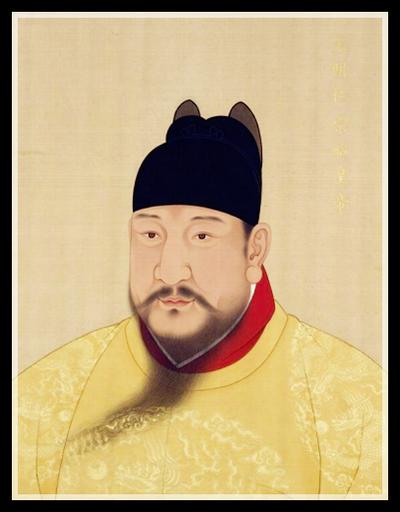
Hongxi Emperor
| Name | Hongxi Emperor |
| Title | emperor of the Ming Dynasty |
| Gender | Male |
| Birthday | 1378-08-16 |
| nationality | Ming dynasty |
| Source | https://www.wikidata.org/wiki/Q9972 |
| pptrace | View Family Tree |
| LastUpdate | 2025-10-31T07:17:12.167Z |
Introduction
The Hongxi Emperor, whose personal name was Zhu Gaochi, was born on 16 August 1378 and died on 29 May 1425. He was the fourth emperor of the Ming dynasty and reigned from 1424 until his death in 1425. He was the eldest son of the Yongle Emperor, Zhu Di, and Empress Renxiaowen. His paternal grandparents were the Hongwu Emperor and Xu Da, Prince of Zhongshan.
Zhu Gaochi was born in 1378 and received a traditional education that encompassed both military and Confucian studies. Due to health issues, he primarily focused on reading and academic discussions, displaying particular interest in literature and governance. Despite his prowess in archery, he was generally disinterested in military affairs, a stance that set him apart from his father and younger brothers, who showed greater military inclinations.
His early experience included managing his father's territories during the Yongle Emperor's military campaigns. Notably, in late 1399, Zhu Gaochi successfully defended Beijing against Li Jinglong’s forces during the siege, with a force of approximately 10,000 soldiers, demonstrating organizational abilities recognized by his father. In May 1404, he was designated as heir to the throne, following recommendations from court officials such as Xie Jin and Huang Huai. During the Yongle Emperor’s campaigns in Mongolia, Zhu Gaochi governed the empire with the aid of ministers and secretaries, although some of his policies deviated from his father's directives.
In 1402, Zhu Di, his father, ascended the throne as the Yongle Emperor after defeating the Jianwen Emperor in a civil war known as the Jingnan campaign. Upon his father's death in 1424, Zhu Gaochi ascended the throne as the Hongxi Emperor on 7 September 1424, adopting the era name "Hongxi," meaning "vastly bright." His accession included an amnesty, reinstatement of imprisoned officials, and reforms aimed at strengthening imperial governance along Confucian principles.
During his reign, the Hongxi Emperor reversed many of the Yongle Emperor's military and overseas policies by discontinuing Zheng He's maritime expeditions, halting trade for horses with other Asian nations, and ending gold and pearl missions to Yunnan and northern Vietnam. He restructured government institutions, including the Grand Secretariat, elevating the status and influence of the grand secretaries. His policies emphasized fiscal reform, social stability, and reduced taxation, especially following the heavy expenses incurred during his predecessor’s military campaigns.
He made the decision to move the imperial capital back to Nanjing, a plan announced shortly before his death, with the goal of economic and administrative efficiency. However, the movement was not executed due to his sudden death, likely caused by a heart attack. He died in Beijing at the age of 46.
Zhu Gaochi was posthumously honored with the temple name Renzong and the posthumous name Emperor Zhao. His burial site is the Xian Mausoleum near Beijing, designed with simplicity reflecting his reign’s austerity. He was succeeded by his son, Zhu Zhanji, who became the Xuande Emperor.
The Hongxi Emperor fathered ten sons and seven daughters; nine sons and four daughters reached adulthood. The eldest son, Zhu Zhanji, succeeded him as emperor. His reign is noted for its emphasis on Confucian ideals, administrative reform, and a departure from the aggressive expansion and military expenditure of the Yongle Emperor’s rule. Despite his brief tenure, his policies influenced subsequent Ming governance, and he is recognized for efforts to restore a more morally upright government based on Confucian principles.
Family Tree
Tap to expand more relatives